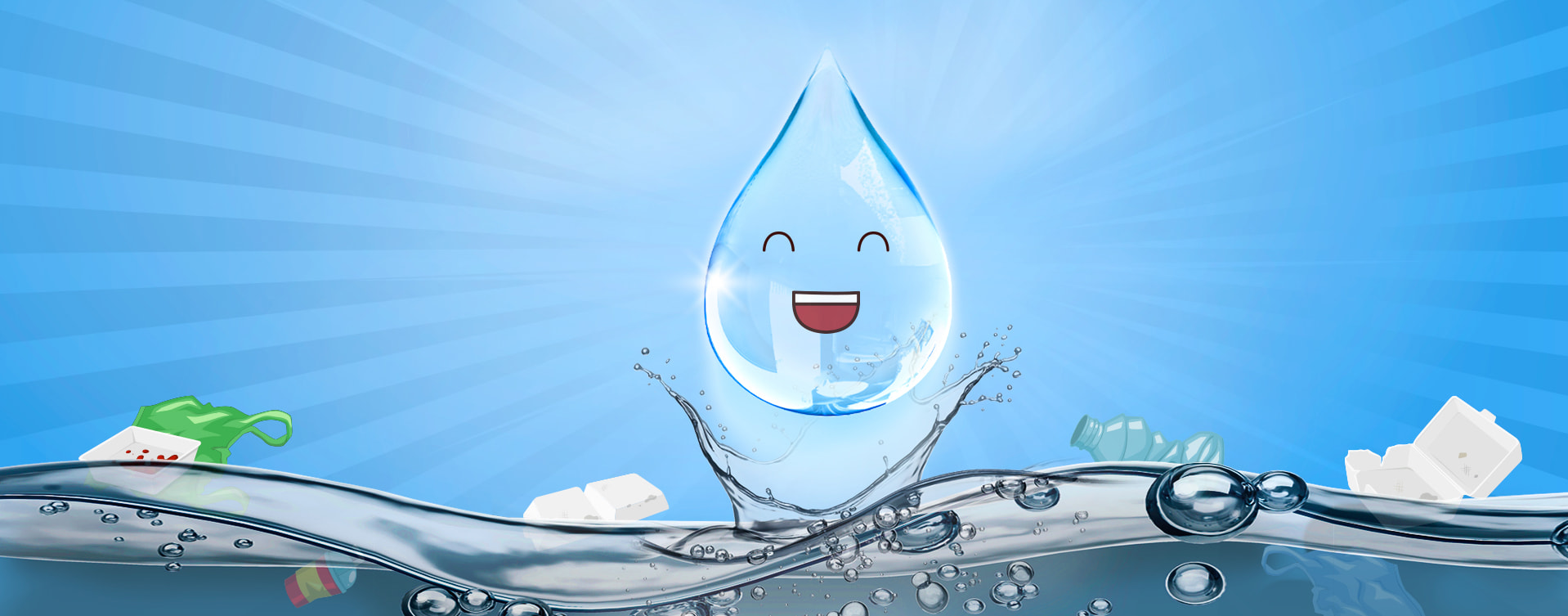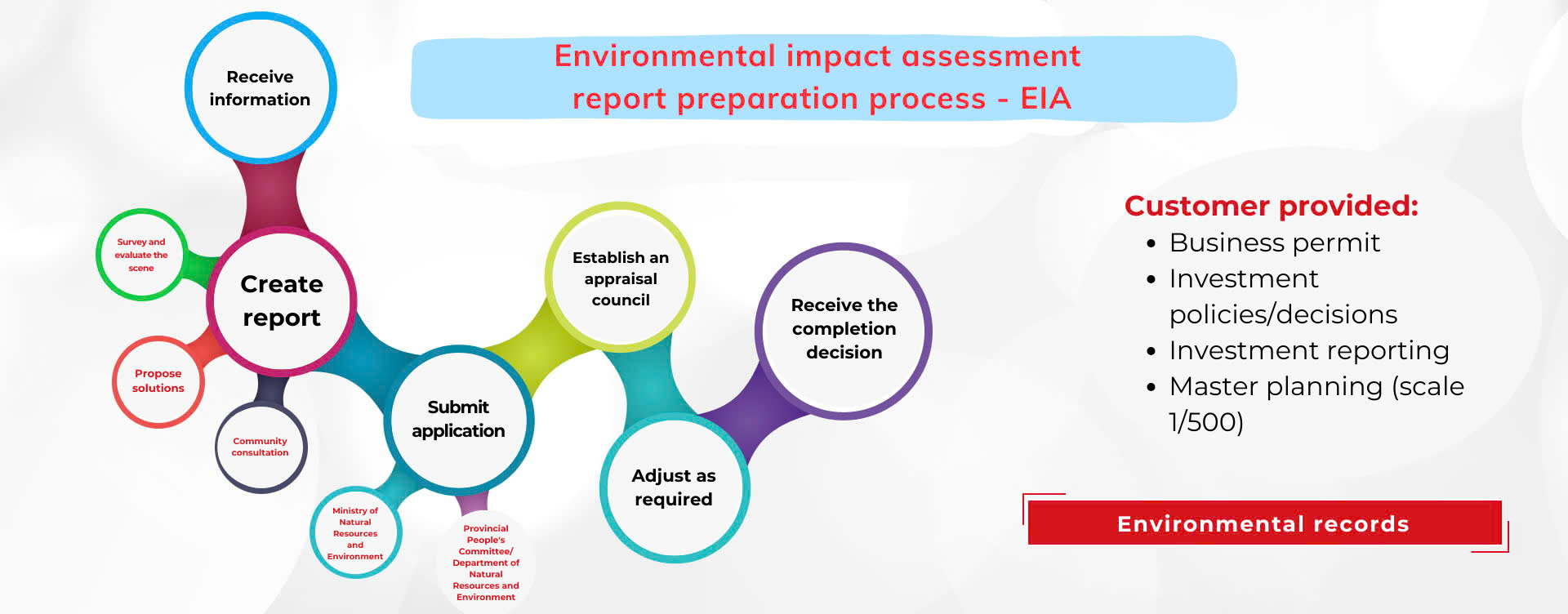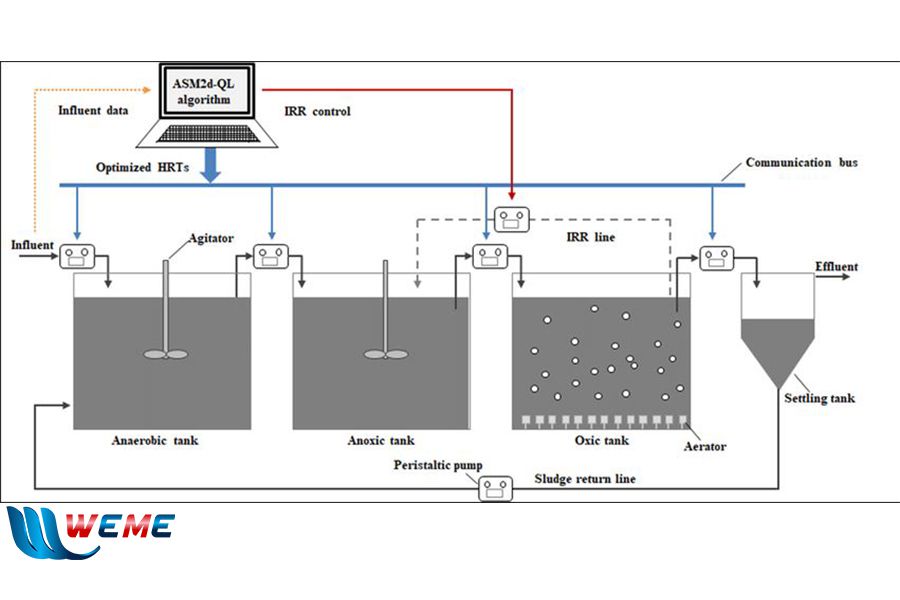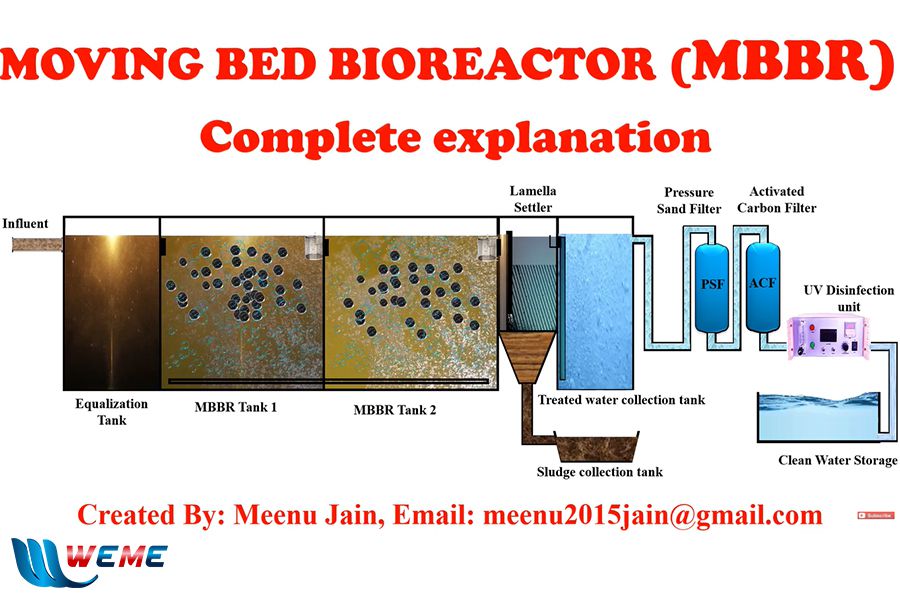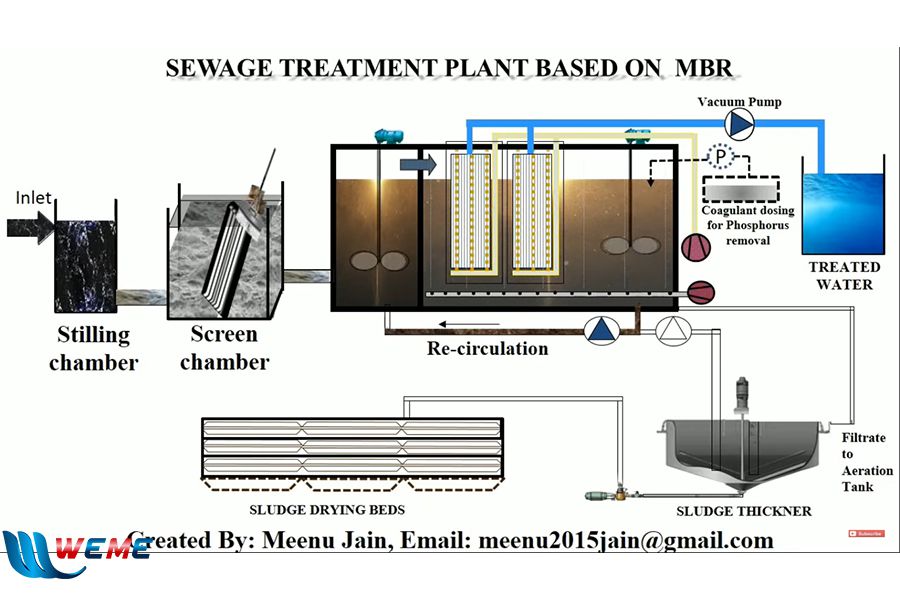Domestic wastewater treatment
Domestic wastewater treatment
- WeMe – Specializing in Domestic Wastewater Treatment Systems
- Domestic Wastewater Treatment Technologies
- Fines for Failing to Treat Domestic Wastewater
- Quotation for Domestic Wastewater Treatment System from WeMe
- Efficient and Cost-Effective Domestic Wastewater Treatment Solution from WeMe
- Overview of Domestic Wastewater
- Industries that Generate Domestic Wastewater
Wastewater Treatment Systems Are a Mandatory Component in Environmental Dossiers for Businesses to Operate. Many investors seeking solutions for their wastewater problems often wonder about the cost of treating 1m³ of domestic wastewater, which technology is the best to deliver high treatment efficiency, and how to optimize other factors for their business. In this article, WeMe will address these concerns by offering a technology solution with many superior advantages and a detailed quote for our domestic wastewater treatment system.
WeMe – Specializing in Domestic Wastewater Treatment Systems
WeMe is a company with many years of experience in the environmental field. We are proud to have partnered with many domestic enterprises to find solutions to wastewater issues. Currently, for systems with large capacities, WeMe continues to apply traditional methods suitable for the characteristics and flow of wastewater. On the other hand, when the treatment capacity is small (< 80 m³/day-night), WeMe prioritizes using the MBR module to achieve high efficiency and optimize various other factors.
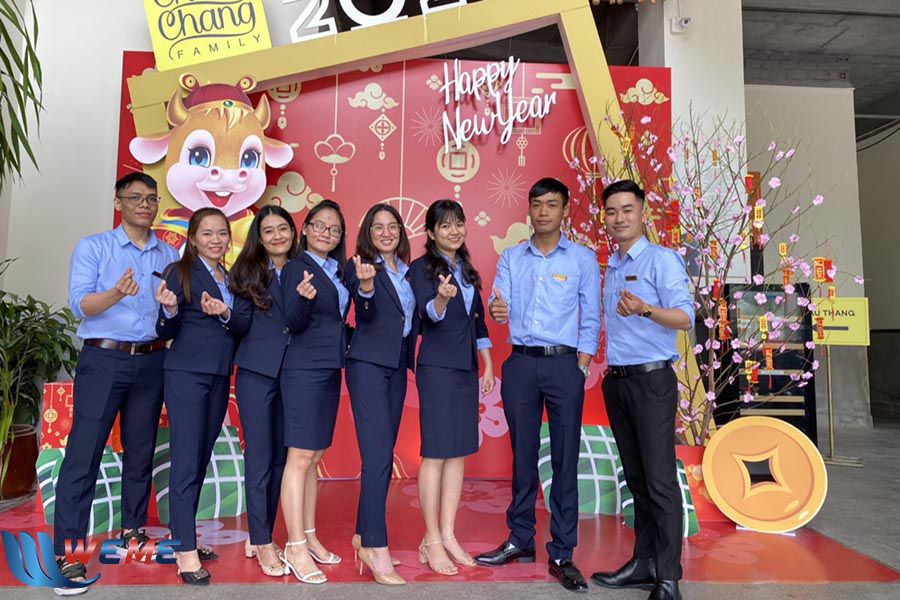
If you have a need for construction, installation, or a quote for a wastewater treatment system, please contact WeMe. We will provide thoughtful advice, address any concerns, and offer the most detailed pricing. It is an honor for WeMe to accompany you.
Domestic Wastewater Treatment Technologies
Criteria for Choosing a Treatment Technology
Below are some criteria that investors should consider to select the appropriate technology for their domestic wastewater treatment system:
- Wastewater Characteristics: Each industry generates wastewater with different characteristics. There is a corresponding technology suited to each type of wastewater.
- Treatment Efficiency: Ensure that pollution parameters meet national discharge standards.
- Suitability for Terrain and Load-Bearing Capacity of the Receiving Source.
- Space-Saving: Using advanced technology will optimize treatment stages, saving construction space compared to traditional technologies.
- Manageability and Maintenance: Suitability with the investor’s operational capacity.
- Reasonable Investment Cost: Within the investor’s financial capacity.
- Environmentally Friendly and Safe.
- Scalability and Efficiency: Easy to increase capacity or improve treatment efficiency in the future.
- Energy-Saving: Potential for wastewater and sludge reuse.
Popular Domestic Wastewater Treatment Technologies
AAO Technology
AAO stands for Anaerobic (Anoxic) – Anoxic – Oxic. It is a continuous biological treatment process using anaerobic, anoxic, and aerobic microorganisms to decompose pollutants in wastewater. The pollutants are treated before discharge into the environment. This technology is suitable for wastewater with high organic content from industries like seafood processing and food production. Below are the advantages and disadvantages of AAO technology in domestic wastewater treatment systems:
| Advantages | Disadvantages |
|---|---|
| Thorough pollutant removal | Effluent quality depends on various factors: microbial treatment efficiency, sludge settling ability, temperature, pH, sludge concentration, input load, etc. |
| Simple, stable operation | Large construction area needed |
| Low investment cost | Complex treatment process |
| Long system lifespan | Requires maintaining a stable sludge concentration |
| Output water must be disinfected |
Aerotank Aerobic Biological Technology
This method relies on the activity of aerobic microorganisms, which use organic matter and some minerals as food to grow and develop. Thanks to this process, contaminants are removed from the wastewater. Below are the advantages and disadvantages of aerotank technology in domestic wastewater treatment systems:
| Advantages | Disadvantages |
|---|---|
| Most commonly used method | Requires high expertise for operation; even a minor error can affect the tank’s performance |
| High treatment efficiency | High energy consumption |
| Removes up to 97% of suspended solids | Generates a large amount of sludge |
| Stabilizes sludge | No nutrient removal capability |
| Reduces odors |
SBR Technology
Sequencing Batch Reactor (SBR) is a batch processing treatment system based on the activated sludge method, where aeration and settling occur intermittently in the same structure. SBR technology is well-suited for medium to small-scale industries such as chemical production, textile dyeing, paper production, cosmetics, and food processing. Below are the advantages and disadvantages of SBR technology in domestic wastewater treatment systems:
| Advantages | Disadvantages |
|---|---|
| Energy-efficient | Requires sophisticated monitoring systems to control the process |
| No need for multiple settling tanks or aerotanks | Difficult maintenance and repair |
| Flexible operation based on input water quality | Output water may carry unsettled sludge |
| Cost savings due to fewer required components | Air blowers may become clogged by sludge if not maintained |
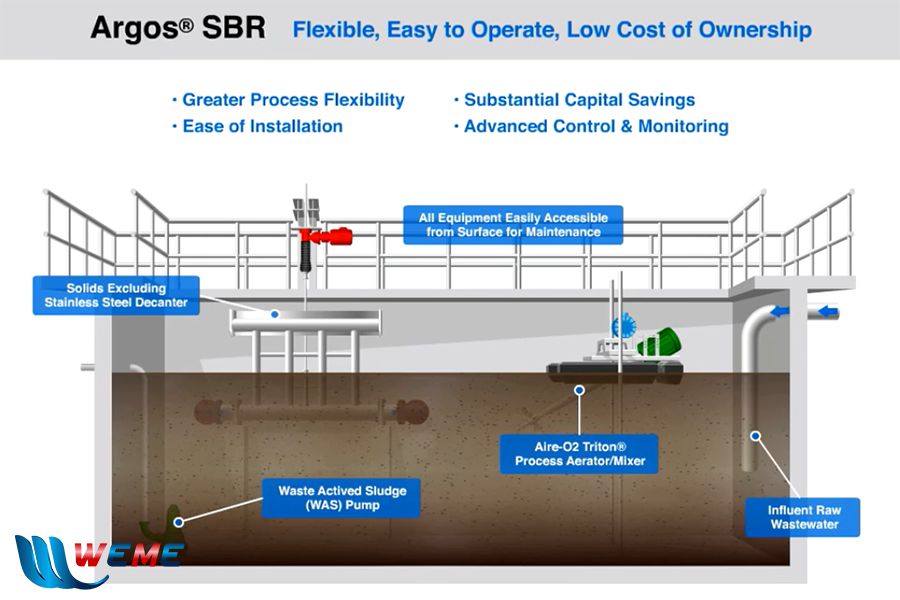
MBBR Technology
Moving Bed Biofilm Reactor (MBBR) uses carrier materials to which microorganisms adhere and grow. It combines traditional aerotanks with aerobic biofilm filters. MBBR technology can be applied to treat wastewater with organic pollutants from various sectors, including healthcare, seafood, food production, and industrial wastewater. Below are the advantages and disadvantages of MBBR technology in domestic wastewater treatment systems:
| Advantages | Disadvantages |
|---|---|
| Energy-saving | Requires settling and filtration systems downstream |
| Space-saving | Microbial attachment depends on carrier quality |
| Easy to operate and upgrade | Carriers can break down over time |
| High microbial density for higher treatment efficiency in smaller tanks |
MBR Technology
Membrane Bioreactor (MBR) combines suspended activated sludge with hollow fiber membrane filtration for wastewater treatment. MBR technology can be applied to various sectors, especially hospitals, hotels, office buildings, and redevelopment projects without reserved land. Below are the advantages and disadvantages of MBR technology in domestic wastewater treatment systems:
| Advantages | Disadvantages |
|---|---|
| New technology that can nearly eliminate pollutants | Frequent membrane cleaning required to avoid clogging |
| Increases treatment efficiency by 20-30% | Chemical cleaning of membranes is necessary every 6-12 months |
| Space-saving as no settling, filtration, or disinfection tanks are needed | |
| High-quality effluent that can be reused | |
| Suitable for both aerobic and anaerobic tanks | |
| Can be modularly designed for various capacities |
Fines for Failing to Treat Domestic Wastewater
According to Article 13 of Decree 155/2016/ND-CP, discharging wastewater that exceeds QCVN standards by 1.1 to 1.5 times or repeating violations of standards less than 1.1 times is subject to penalties as follows:
- Fines ranging from VND 300,000 to VND 500,000 for discharges of less than 5 m³/day;
- Fines from VND 500,000 to VND 2,000,000 for discharges of 5-10 m³/day;
- Fines from VND 2,000,000 to VND 5,000,000 for discharges of 10-20 m³/day;
- Fines from VND 5,000,000 to VND 10,000,000 for discharges of 20-40 m³/day;
Depending on the severity of the violation, fines may escalate to hundreds of millions or even billions of dong.
Quotation for Domestic Wastewater Treatment System from WeMe
To address the question of the cost of treating 1m³ of domestic wastewater (during the system investment phase), WeMe provides the following quotation for our domestic wastewater treatment systems. One note is that the larger the capacity, the lower the investment cost per cubic meter of wastewater.
Table 2: Quotation for Domestic Wastewater Treatment System from WeMe
| No. | Capacity | Reference Price | Notes |
|---|---|---|---|
| 1 | 5m³/day-night | VND 218,300,000 | Costs (including 8% VAT) include:
|
| 2 | 10m³/day-night | VND 253,600,000 | |
| 3 | 15m³/day-night | VND 305,500,000 | |
| 4 | 20m³/day-night | VND 337,000,000 | |
| 5 | 25m³/day-night | VND 475,800,000 | |
| 6 | 30m³/day-night | VND 524,800,000 | |
| 7 | 35m³/day-night | VND 546,400,000 | |
| 8 | 40m³/day-night | VND 599,900,000 |
Regarding system maintenance costs, it is only about VND 2,500 per m³ of wastewater. The price quote from WeMe for domestic wastewater treatment systems includes detailed cost breakdowns, preliminary system drawings, process flow diagrams, and a system technology explanation for the project. Additionally, WeMe provides installation support for systems with a capacity of over 40m³. Please contact us for the most detailed pricing information.
Efficient and Cost-Effective Domestic Wastewater Treatment Solution from WeMe
WeMe offers a solution by applying MBR membrane filtration technology to domestic wastewater treatment systems.
Technology Flow Diagram for Domestic Wastewater Treatment System
Explanation:
- Collection Pit:
Domestic wastewater, after separating solid waste, grease, and oil, is collected in a pit before entering the treatment system. The separation process eliminates large waste materials, such as plastic bags, paper, leaves, glass shards, and gravel, to prevent clogging pipes and pumps during operation and to protect mechanical devices from wear.
- Equalization Tank:
Air is supplied to stir the wastewater, preventing sedimentation and anaerobic decomposition that causes foul odors. The equalization tank serves to stabilize the concentration and flow rate of the wastewater. The wastewater is then pumped into the anoxic tank.
- Anoxic Tank:
At this stage, phosphorus is converted, and NO3- is reduced to N2, which escapes into the atmosphere. The concentration of P and N in the wastewater decreases to permissible levels. The wastewater then flows into the aeration tank.
- Aerotank:
Organic matter is removed by aerobic microorganisms. These microorganisms use the organic compounds in the wastewater as a food source to grow, develop, and create biomass. The organic compounds are broken down into simpler substances. Air is continuously supplied through blowers and diffusers installed at the bottom of the tank.
- MBR Module:
This consists of parallel flat filtration membranes submerged in the aeration tank. Aerobic treatment continues here. The MBR membrane, with its microfiltration size, retains sludge, microorganisms, and suspended solids, allowing only clean water to pass through.
After passing through the domestic wastewater treatment system, the water meets QCVN 14:2008/BTNMT standards and is safe for discharge into receiving bodies.
Advantages of the Domestic Wastewater Treatment System
MBR is advanced technology applied by WeMe to design and manufacture wastewater treatment modules. The domestic wastewater treatment system by WeMe is trusted and highly regarded by many domestic businesses due to several outstanding advantages:
- Compact design, suitable for installation in areas with limited space.
- The system is pre-manufactured, replacing traditional concrete structures, enabling quick installation and immediate use, and is highly flexible for disassembly and relocation.
- Increases biological treatment efficiency by 10-30% due to an increase in MLSS (Mixed Liquor Suspended Solids) by 2-3 times compared to traditional aerotanks.
- MBR technology provides superior effluent quality.
- The treated water is highly transparent and can be reused for other activities like irrigation, car washing, and street cleaning.
- Space-saving and cost-effective.
- Fully automated operation, safe, and easy to manage with fewer components.
- Convenient for capacity upgrades by adding modules when businesses want to expand.
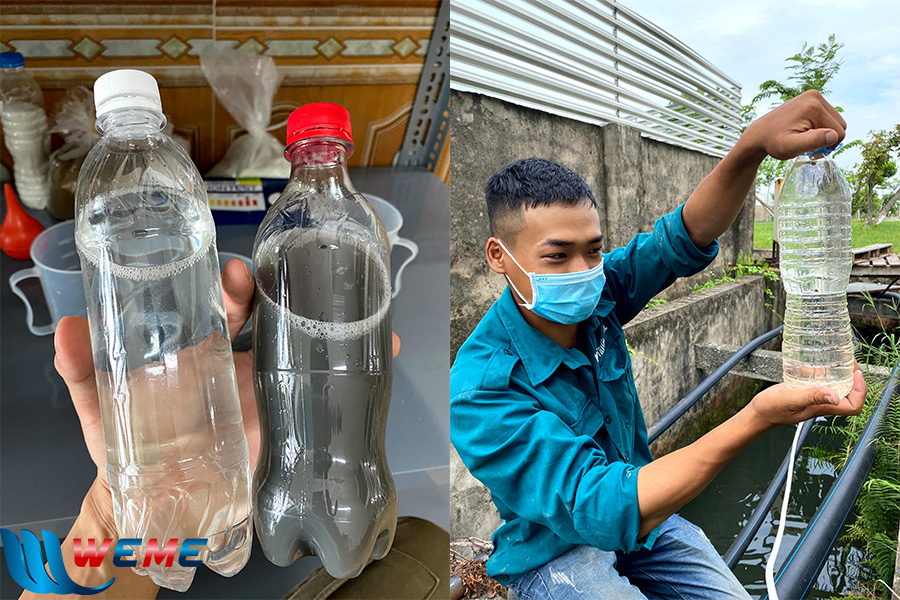
Overview of Domestic Wastewater
Sources of Domestic Wastewater
Domestic wastewater is generated from human activities such as eating, drinking, bathing, laundry, and personal hygiene. The sources of domestic wastewater include:
- Blackwater: Contaminated by human waste from toilets.
- Greywater: Contaminated by activities such as bathing, laundry, cooking, washing food, handwashing, floor cleaning, and car washing.
Composition of Domestic Wastewater
It includes:
- 52% biodegradable organic matter. The organic matter consists of compounds like proteins (40-50%), carbohydrates (40-50%), and fats (5-10%).
- 48% inorganic matter.
- A significant amount of harmful microorganisms and dangerous pathogens.
Table 1: Pollutant Concentrations in Untreated Domestic Wastewater Compared to QCVN 14:2008/BTNMT
| Pollutants | Unit | Concentration | QCVN 14:2008/BTNMT |
|---|---|---|---|
| Light | Medium | ||
| BOD5 (20°C) | mg/L | 110 | 220 |
| Total Suspended Solids (TSS) | mg/L | 100 | 220 |
| Total Dissolved Solids | mg/L | 250 | 500 |
| Sulfide | mg/L | 20 | 30 |
| Ammonia (as N) | mg/L | 12 | 25 |
| Fats and Oils | mg/L | 50 | 100 |
| Phosphate (as P) | mg/L | 4 | 8 |
| Total Coliforms | MPN/100 mL | 10⁶-10⁷ | 10⁷-10⁸ |
From the table above, it is evident that the pollution parameters in untreated domestic wastewater far exceed the permissible values according to QCVN 14:2008/BTNMT. If not treated, it will cause severe consequences for the environment, human health, and lead to legal complications. Therefore, investing in a domestic wastewater treatment system is essential for businesses that generate this type of wastewater.
Industries that Generate Domestic Wastewater
Domestic wastewater is produced wherever human activities occur. At factories and industrial zones with a large number of workers, the issue of domestic wastewater treatment becomes even more critical. WeMe’s domestic wastewater treatment systems can be applied to treat wastewater from the following industries:
- Restaurants and Hotels
- Resorts
- Supermarkets
- Markets
- Apartment Complexes
- Offices, worker camps at major construction sites
In addition, specific industries such as pharmaceuticals, food, healthcare, and manufacturing may benefit from separating domestic wastewater from industrial wastewater to reduce treatment costs.

WeMe Energy Joint Stock Company
| Headquarters | : 124/1 Ly Thuong Kiet, Ward 7, Go Vap District, Ho Chi Minh City |
| Hotline | : 0906.653.007 |
| : wemecompany@gmail.com | |
| Fanpage | : Môi Trường WeMe |
| Northern Region (Consultant) | : 0845.653.007 |
| Central Region (Consultant) | : 0847.653.007 |
| Southern Region (Consultant) | : 0824.653.007 |

